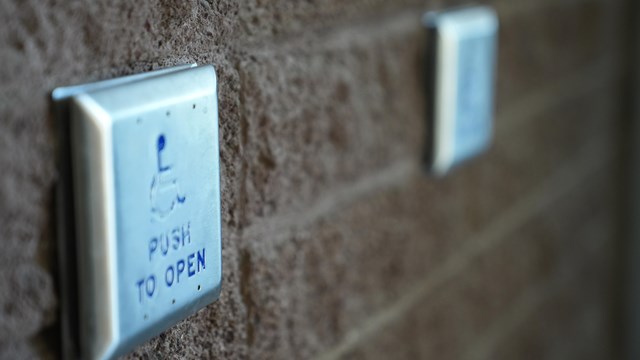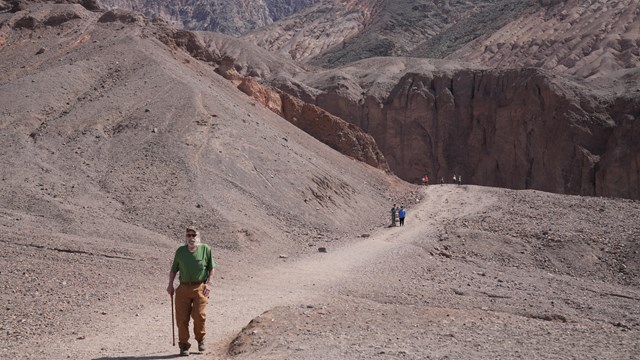|
Death Valley is a unique landscape with a wide variety of terrain and geological features across its 3.4 million acres. While recreating within the park, please be aware that there is also a wide breadth of terrain. This includes mixed gravel, broken or uneven pavement, sand of varying depths, large rock fields, and loose alluvium depending on where you go. Much of our park is designated, protected wilderness. What this means if that our trail system is largely not maintained. Expect uneven and unpaved terrain at our campsites, trails and many of our popular destinations throughout the majority of the park. Check out our pages, below, to learn more about our specific accessibility facts for the park's facilities and the park's sightseeing and trails. 
Facility
Learn more about our visitor center, campgrounds, hotels, and restaurants' accessibility. 
Sightseeing and Hiking
Learn more about our popular sights' and hikes' accessibility. Motorized Personal VehiclesMotorized wheelchairs and assistive mobility devices that are designed solely for use by a person with a mobility impairment are permitted in all areas where foot travel is allowed, including wilderness areas. Other power-driven mobility devices that do not meet the definition of a wheelchair under the Americans with Disabilities Act (Title V Section 508c) such as all-terrain vehicles, golf carts, and Segways® are not permitted on trails and pathways, and are not permitted in wilderness areas to protect the delicate natural and cultural resources of Death Valley.See Section 504 of the Rehabilitation Act of 1973 (P.L. 93-112) for more details. See the ADA Requirements for more details on what what types of mobility devices are allowed. |
Last updated: May 9, 2023
